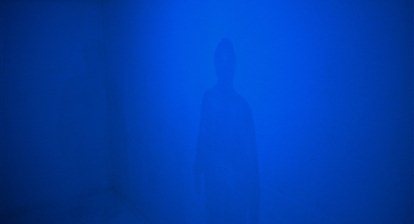Fire at the heart of the void
Many opinions are being voiced that the ‘critical’ architecture and practice of the past decades, based on the neo-Marxist principles of the Frankfurter Schule, is no longer relevant and should be replaced by something other, which various authors have given different names. Stan Allen, for example, calls it pragmatic realism. Michael Hays uses the word ‘scanning’, which he finds in the practice of Diller + Scofidio. Robert Somol and Sarah Whiting introduced the word ‘projective’ in this debate. The common theme in all these attempts to find something other than the negation-based neo-Marxist dialectics, is that they are all premised on existing reality. Reality is taken as a given, the field within which the architect/critic operates. Here, attempts to fundamentally transform reality, doomed to fail from the outset, are no longer made. At most, systems are undermined or subverted from the inside, or, as Rem Koolhaas calls it, there is a kind of ‘surfing’ the waves of capital, commerce and power.

In general, authors such as Somol, Baird and Speaks see the practice of Koolhaas and its various Dutch spinoffs as the most exemplary for this ‘new’ pragmatic realist mode of operation. This realism has an important European precursor in the form of the Nouveau Réalistes, a name given to these primarily French artists by Pierre Restany. Included were people such Jean Tinguely, Yves Klein, Arman and César. With Restany as their own personal theorist, they researched how to give form to “the expressive autonomy of the real”. They were, in Restany’s words, “forty degrees above the Dada zero”. In other words, they researched ‘how Dada could be used as a tool’. In a sense, you could go so far as to see in them a European form of the work of Robert Venturi and Denise Scott Brown. The greatest difference here is that the Europeans never lost sight of their Beaux Arts education and never felt drawn towards political engagement.
Towards a poetic pragmatic realism
Perhaps we will have to clarify the formal and conceptual parallels between the work of the ‘old’ Nouveau Réalistes and the pragmatic realism to be seen in the work of OMA, Diller+Scofidio but also of Mies van der Rohe. There are many striking similarities, especially on the level of the pragmatic. But more importantly, the Nouveau Réalistes succeeded in dragging a miraculous poetry out of the everyday. Maybe architecture needs to focus on the pragmatic poetry hidden in the real. Yves Klein finds this in de void, the void that he created in Haus Lange Designed by Mies van der Rohe. Precisely herein lies the possibility to transcend the opposition between ‘projective’ practices and theories and ‘critical’ practices and theories, by introducing a new paradigm:
the poetry of the real.
Jasper de Haan 2005/2010